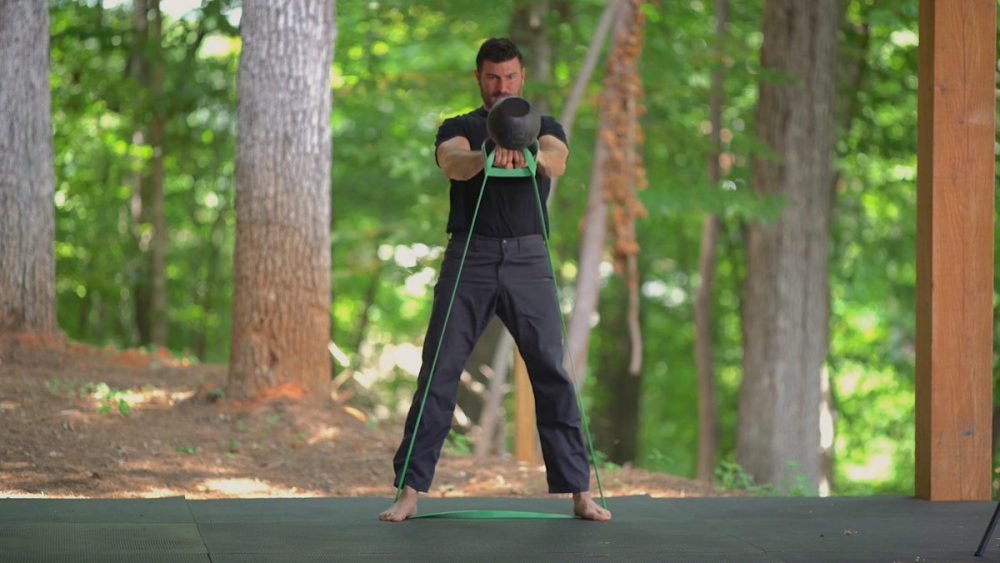HIIT and HIRT require resistance
High Intensity Interval Training
This is generally does not require Resistance; if you are defining Resistance as Weights, Bands, etc.
High Intensity Interval Training is usually performed with Sprints of some type; such as Running Sprints, Airdyne Bike Sprints, Rowing Sprints, etc.
High Intensity Interval Resistance Training
HIIRT (I left out the second I of it in my previous post) essentially is High Intensity Intervals that involve weighted exercise or bands. Pushing a weighted sled would fall into this category.
It is essentially Circuit Training with weights.
Cluster Set Training
Let's break this down.
A Cluster Set occurs when there is a short pause in a Repetition in an Exercise Set.
Many individual inadvertently perform a Cluster Set in their training without realize it.
In performing let's say a set of 10 Repetitions they begin to struggle with the 8th Rep. What many will do is pause (rest) for a few seconds before attempting the 9th Rep and do the same for the 10th Rep. Thus, it is a Cluster Set.
With that in mind the following fall into the category of being Cluster Sets
1
) High Intensity Interval Aerobic Sprint Training
2) High Intensity Interval Resistance Training
3) High Intensity Repeat Training
Think of it like...
Strength Training
There are essentially three types.
1) Maximum Strength Training
The use of loads of 85% of 1 Repetition Max, Low Repetition of 1-5, and Long Rest Between Sets of 3 minutes or more.
2) Power Strength Training
The use of loads of 46-62% of 1 Repetition Max, Low Repetition of 1-5, and Long Rest Between Sets of 3 minutes or more.
With Olympic Movements, Power is displayed and developed with load of 70-80%.
3) Speed Strength Training
The use of loads of 10-40% of 1 Repetition Max, Low Repetition of 1-5, and Long Rest Between Sets of 3 minutes or more.
As you can what determines which Strength is being trained is the Training Percentage being used.
Strength Endurance
This term doesn't make a lot of sense.
It is an Oxymoron.

Strength and Endurance are on opposite sides.
Aerobic Capacity Intensity Cluster Set Training
Aerobic Capacity is developed with Short Rest Periods more so than Anaerobic Capacity.
The Tabata Protocol is an Example
Anaerobic Capacity Interval Clusters
Anaerobic Capacity is developed with Longer Rest Periods more so than Aerobic Capacity.
Repeat High Intensity Cluster Set Training
These Cluster Set Training Programs fall into the Repeat High Intensity Cluster Set Training.
1) Olympic Lift Cluster Set Training
Practical Application of Traditional and Cluster Set Configurations Within a Resistance Training Program
ning phase, strength and conditioning professionals need to better understand how different set configurations affect the training adaptations that result from resistance training. Traditional and cluster set structures are commonly implemented by strength and conditioning professionals as part...

journals.lww.com
Olympic Lifters have utilized this method for decades.
Cluster Set Rest Periods are kept to around 45 seconds. Dr. Greg Haff's research determined that 80% of Muscle Restoration occurred during that 45 Seconds.
2) Westside Powerlifting Dynamic Effort Training
The Westside Dynamic Effort Method utilized Cluster Set Rest Periods of 60 Seconds.
Westside is partially build on Olympic Lifter Training.
Repeat Method and Interval Method. If the rest period between sets of the exercise is of sufficient duration for the restoration of the body back to the optimal condition (that makes it possible to maintain a quality performance of the exercise), it is recognized as the Repeat Method. If the rest period between sets is not of sufficient duration for the restoration of the body back to the optimal condition, it is recognized as the Interval Method."
Cluster Set Rest Periods
The Rest Period has a lot to do with the training effect elicited from Cluster Sets.
Short Rest Period primarily increase Aerobic Capacity.
Longer Rest Periods primarily increase Anaerobic Capacity.
I have not seen any data on how much Muscle ATP Restoration occurs in 10-15 seconds.
Here's the data on the amount of Muscle ATP Restoration that takes place with...
1) 30 Seconds Rest Between Cluster
About 50% of Muscle ATP Restoration occurs.
2) 45 Second Rest Between Clusters
Right at 80% of Muscle ATP Restoration occurs.
3) 3 Minutes Plus
100% of Muscle ATP happens with three minutes or longer of Rest Between Sets; which means this method does not fall into Cluster Set Training.







